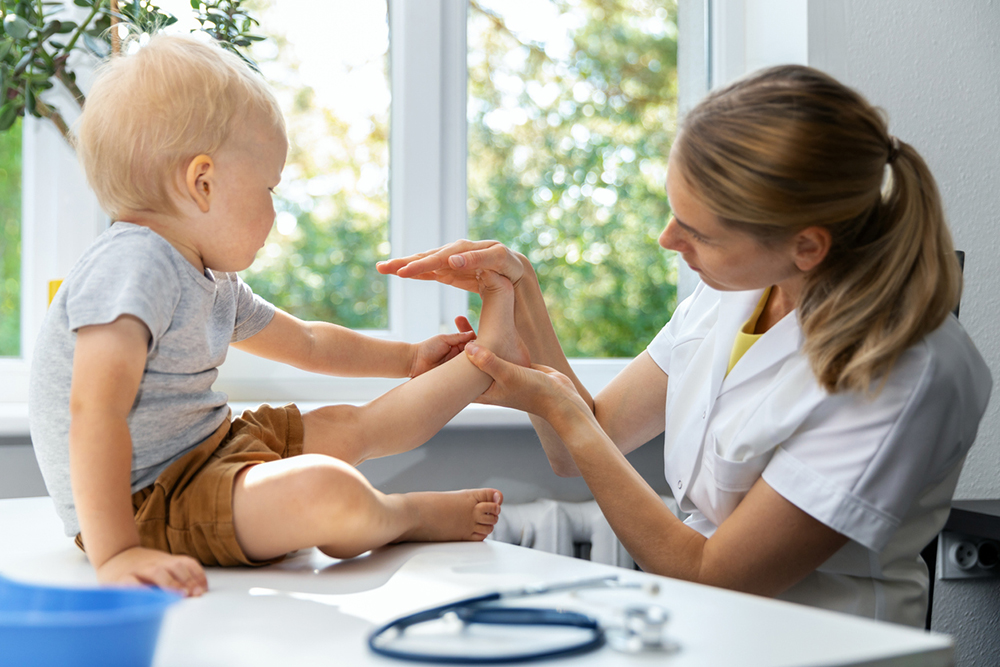 Research has shown there may be a connection between walking barefoot and increased cognitive abilities. When children walk barefoot, they may become more aware of different textures that are walked on, which may contribute to understanding spatial awareness. There are numerous nerves in the feet, and when shoes are frequently eliminated, the opportunity to grow new neural connections may increase. The skin on the bottom of the feet will become tougher, and walking in environments with grass or sand may help to increase a sense of freedom. Toxic stress may be decreased, and walking in these types of environments may help to regulate the nervous system. Studies have shown that babies' feet are preferred receptors, and emotions may possibly be regulated when children can walk barefoot while outside. If you would like more information about the benefits of having your child walk barefoot, please speak with a podiatrist who can address any concerns you may have.
Research has shown there may be a connection between walking barefoot and increased cognitive abilities. When children walk barefoot, they may become more aware of different textures that are walked on, which may contribute to understanding spatial awareness. There are numerous nerves in the feet, and when shoes are frequently eliminated, the opportunity to grow new neural connections may increase. The skin on the bottom of the feet will become tougher, and walking in environments with grass or sand may help to increase a sense of freedom. Toxic stress may be decreased, and walking in these types of environments may help to regulate the nervous system. Studies have shown that babies' feet are preferred receptors, and emotions may possibly be regulated when children can walk barefoot while outside. If you would like more information about the benefits of having your child walk barefoot, please speak with a podiatrist who can address any concerns you may have.
The health of a child’s feet is vital to their overall well-being. If you have any questions regarding foot health, contact Brent Harwood, DPM from Southeast Podiatry. Our doctor can provide the care you need to keep you pain-free and on your feet.
Tips for Keeping Children's Feet Healthy
If you have any questions please feel free to contact our offices located in Fairhope, Brewton, and Atmore, AL. We offer the newest diagnostic and treatment technologies for all your podiatric needs.
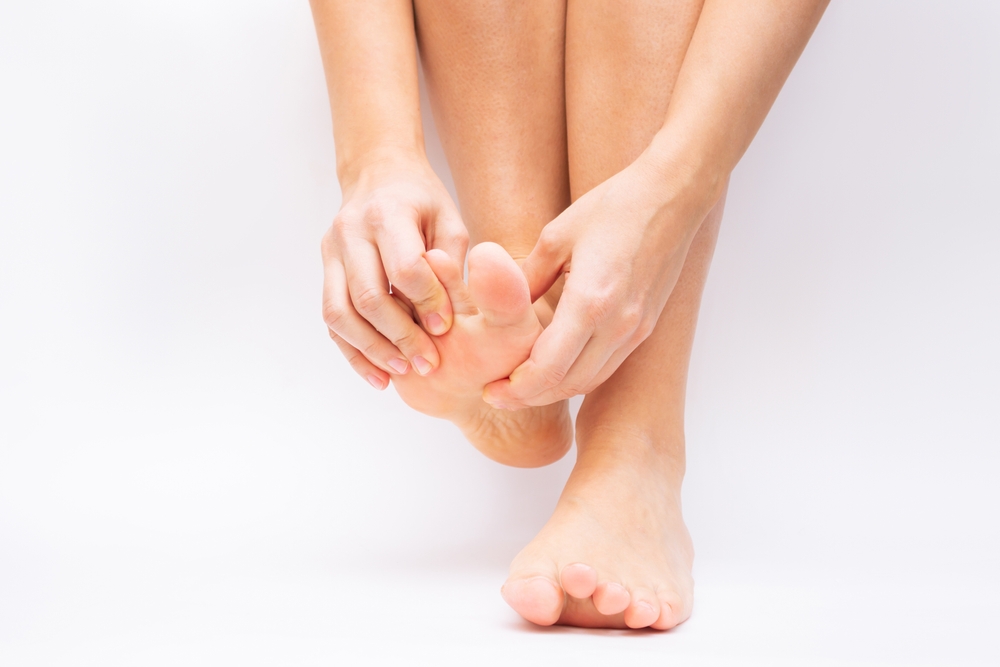 Toe pain can make every single step excruciating. Toe pain can have many different sources, including injuries, arthritis, and hammertoe. Some of these things can be treated with home care, and some need additional medical intervention. Gout is a form of arthritis that commonly affects the big toe. It is caused by a buildup of uric acid in the bloodstream, and crystals form, which settle in certain joints. It causes severe pain at the base of the big toe, redness, and swelling. Hammertoe is a deformity where toes bend abnormally in the middle joint. The downward flex of the joint looks like a hammer, thus its name. It is most common in the second, third, and fourth toes. A hammertoe can make it difficult to walk and stretching and moving the toes can be impossible. If you have toe pain, see a podiatrist for medical treatment.
Toe pain can make every single step excruciating. Toe pain can have many different sources, including injuries, arthritis, and hammertoe. Some of these things can be treated with home care, and some need additional medical intervention. Gout is a form of arthritis that commonly affects the big toe. It is caused by a buildup of uric acid in the bloodstream, and crystals form, which settle in certain joints. It causes severe pain at the base of the big toe, redness, and swelling. Hammertoe is a deformity where toes bend abnormally in the middle joint. The downward flex of the joint looks like a hammer, thus its name. It is most common in the second, third, and fourth toes. A hammertoe can make it difficult to walk and stretching and moving the toes can be impossible. If you have toe pain, see a podiatrist for medical treatment.
Toe pain can disrupt your daily activities. If you have any concerns, contact Brent Harwood, DPM from Southeast Podiatry. Our doctor can provide the care you need to keep you pain-free and on your feet.
What Causes Toe Pain?
Most severe toe pain is caused due to a sports injury, trauma from dropping something heavy on the toe, or bumping into something rigid. Other problems can develop over time for various reasons.
Toe pain can be caused by one or more ailments. The most common include:
When to See a Podiatrist
Diagnosis
In many cases the cause of toe pain is obvious, but in others, a podiatrist may want to use more advanced methods to determine the problem. These can range from simple visual inspections and sensation tests to X-rays and MRI scans. Prior medical history, family medical history, and any recent physical traumatic events will all be taken into consideration for a proper diagnosis.
Treatment
Treatments for toe pain and injuries vary and may include shoe inserts, padding, taping, medicines, injections, and in some cases, surgery. If you believe that you have broken a toe, please see a podiatrist as soon as possible.
If you have any questions please feel free to contact our offices located in Fairhope, Brewton, and Atmore, AL. We offer the newest diagnostic and treatment technologies for all your podiatric needs.
 There is no mistaking when an ingrown toenail develops. It is often noticed when the nail grows into the skin instead of over it. If prompt medical attention is not received, it may ooze a discharge, and become infected. An ingrown toenail can happen for various reasons. Trimming the toenails incorrectly is a common reason, in addition to wearing shoes that are too tight. Older people may frequently get ingrown toenails, possibly as a result of having poor eyesight, or not being able to reach their toes. Some people find mild relief when they soak their feet in warm water, followed by gently pulling the skin away from the nail. This is a temporary solution, and the skin will often return to the way it was before the feet were soaked. A bandage may have to be worn over the tender skin for protection until professional medical attention is sought. If you have developed this condition, it is strongly suggested that you see a podiatrist sooner rather than later who can effectively treat an ingrown toenail.
There is no mistaking when an ingrown toenail develops. It is often noticed when the nail grows into the skin instead of over it. If prompt medical attention is not received, it may ooze a discharge, and become infected. An ingrown toenail can happen for various reasons. Trimming the toenails incorrectly is a common reason, in addition to wearing shoes that are too tight. Older people may frequently get ingrown toenails, possibly as a result of having poor eyesight, or not being able to reach their toes. Some people find mild relief when they soak their feet in warm water, followed by gently pulling the skin away from the nail. This is a temporary solution, and the skin will often return to the way it was before the feet were soaked. A bandage may have to be worn over the tender skin for protection until professional medical attention is sought. If you have developed this condition, it is strongly suggested that you see a podiatrist sooner rather than later who can effectively treat an ingrown toenail.
Ingrown toenails can become painful if they are not treated properly. For more information about ingrown toenails, contact Brent Harwood, DPM from Southeast Podiatry. Our doctor can provide the care you need to keep you pain-free and on your feet.
Ingrown Toenails
Ingrown toenails occur when a toenail grows sideways into the bed of the nail, causing pain, swelling, and possibly infection.
Causes
Prevention
Because ingrown toenails are not something found outside of shoe-wearing cultures, going barefoot as often as possible will decrease the likeliness of developing ingrown toenails. Wearing properly fitted shoes and using proper cutting techniques will also help decrease your risk of developing ingrown toenails.
Treatment
Ingrown toenails are a very treatable foot condition. In minor cases, soaking the affected area in salt or antibacterial soaps will not only help with the ingrown nail itself, but also help prevent any infections from occurring. In more severe cases, surgery is an option. In either case, speaking to your podiatrist about this condition will help you get a better understanding of specific treatment options that are right for you.
If you have any questions please feel free to contact our offices located in Fairhope, Brewton, and Atmore, AL. We offer the newest diagnostic and treatment technologies for all your podiatric needs.
 Sweaty feet can be a temporary problem caused by having your feet enclosed in shoes and socks all day, or from high temperatures. But if having sweaty feet is an everyday occurrence, the chances are that you have a condition known as hyperhidrosis. This condition is thought to be genetic in nature. Some people are born with overactive sweat glands, and the moisture produced goes well beyond sweating from hot weather, exercising, or stress. Several underlying health conditions and certain foods may also cause hyperhidrosis. In some cases of hyperhidrosis bacteria forms around the feet causing them to emit a foul odor. It is a good idea to use antibacterial soap regularly to keep the feet clean and healthy. Wearing moisture-wicking socks or open-toed shoes or sandals is a good way to keep your feet dry. A podiatrist can offer more advanced treatment options, including several prescribed antiperspirant medications. In extreme cases, surgery to block the nerve passageway that tells the feet to sweat can be performed. For more information, please contact a podiatrist.
Sweaty feet can be a temporary problem caused by having your feet enclosed in shoes and socks all day, or from high temperatures. But if having sweaty feet is an everyday occurrence, the chances are that you have a condition known as hyperhidrosis. This condition is thought to be genetic in nature. Some people are born with overactive sweat glands, and the moisture produced goes well beyond sweating from hot weather, exercising, or stress. Several underlying health conditions and certain foods may also cause hyperhidrosis. In some cases of hyperhidrosis bacteria forms around the feet causing them to emit a foul odor. It is a good idea to use antibacterial soap regularly to keep the feet clean and healthy. Wearing moisture-wicking socks or open-toed shoes or sandals is a good way to keep your feet dry. A podiatrist can offer more advanced treatment options, including several prescribed antiperspirant medications. In extreme cases, surgery to block the nerve passageway that tells the feet to sweat can be performed. For more information, please contact a podiatrist.
If you are suffering from hyperhidrosis contact Brent Harwood, DPM from Southeast Podiatry. Our doctor can provide the care you need to attend to all of your podiatric needs.
Hyperhidrosis of the Feet
Hyperhidrosis is a rare disorder that can cause people to have excessive sweating on their feet. This can usually occur all on its own without rigorous activity involved. People who suffer from hyperhidrosis may also experience sweaty palms.
Although it is said that sweating is a healthy process meant to cool down the body temperature and maintain a proper internal temperature, hyperhidrosis may prove to be a huge hindrance to a person’s everyday life.
Plantar hyperhidrosis is considered to be the main form of hyperhidrosis. Secondary hyperhidrosis can refer to sweating that occurs in areas other than the feet or hands and armpits. Often this may be a sign of it being related to another medical condition such as menopause, hyperthyroidism, or even Parkinson’s disease.
In order to alleviate this condition, it is important to see your podiatrist so that they may prescribe the necessary medications so that you can begin to live a normal life again. If this is left untreated, it is said that it will persist throughout an individual’s life.
A last resort approach would be surgery, but it is best to speak with your podiatrist to find out what may be the best treatment for you.
If you have any questions please feel free to contact our offices located in Fairhope, Brewton, and Atmore, AL. We offer the newest diagnostic and treatment technologies for all your podiatric needs.
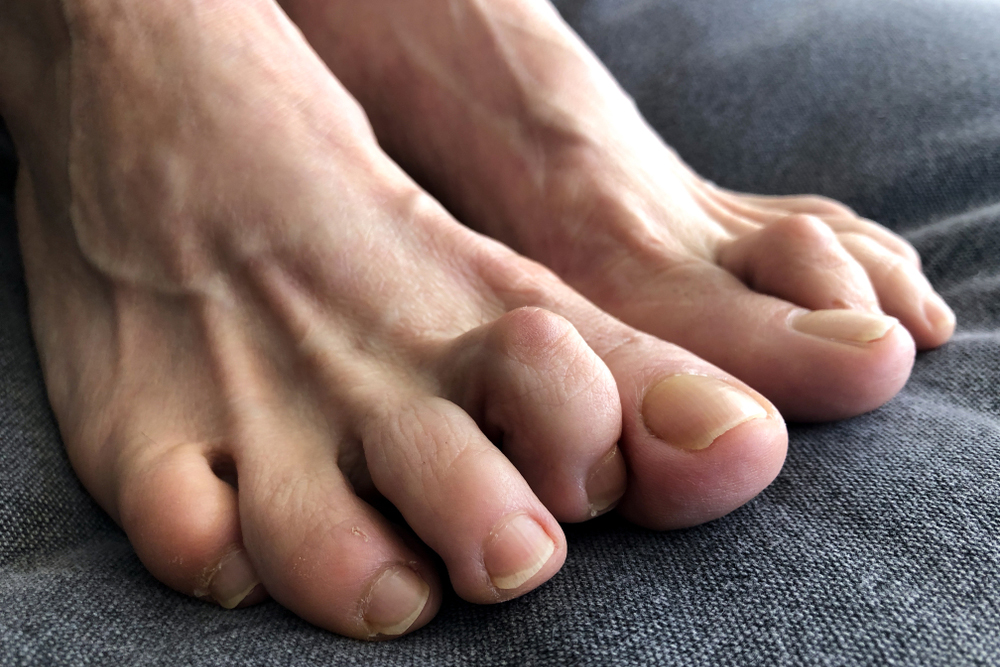 Hammertoe is a deformity that is usually found in the second toe. It is caused by an imbalance of the muscles, tendons, and ligaments that work together to make the toe straight. The result is that the middle joint of the toe raises up to form a peak, while the tip of the toe curls under. The type of shoes you wear, foot structure, and genetics all can contribute to the formation of a hammertoe. Women who wear high heels with pointy toes and children who wear shoes that are too short for their feet are more at risk of developing a hammertoe. Some people are simply born that way. Pain from a hammertoe occurs when the raised joint rubs against the inside of the top of the shoe. A corn or callus can develop, which may affect the gait and can increase pain in other parts of the foot and the body. A podiatrist can give you options for treating a hammertoe. Devices called hammertoe regulators can be custom fitted to help straighten the toe. Gentle exercises, such as picking up a towel with your toes can stretch and straighten the small muscles of the feet. In severe cases, surgery can be performed to permanently straighten the toe. For details on treatment options, please consult a podiatrist.
Hammertoe is a deformity that is usually found in the second toe. It is caused by an imbalance of the muscles, tendons, and ligaments that work together to make the toe straight. The result is that the middle joint of the toe raises up to form a peak, while the tip of the toe curls under. The type of shoes you wear, foot structure, and genetics all can contribute to the formation of a hammertoe. Women who wear high heels with pointy toes and children who wear shoes that are too short for their feet are more at risk of developing a hammertoe. Some people are simply born that way. Pain from a hammertoe occurs when the raised joint rubs against the inside of the top of the shoe. A corn or callus can develop, which may affect the gait and can increase pain in other parts of the foot and the body. A podiatrist can give you options for treating a hammertoe. Devices called hammertoe regulators can be custom fitted to help straighten the toe. Gentle exercises, such as picking up a towel with your toes can stretch and straighten the small muscles of the feet. In severe cases, surgery can be performed to permanently straighten the toe. For details on treatment options, please consult a podiatrist.
Hammertoe
Hammertoes can be a painful condition to live with. For more information, contact Brent Harwood, DPM from Southeast Podiatry. Our doctor will assess your condition and provide you with quality treatment.
Hammertoe is a foot deformity that affects the joints of the second, third, fourth, or fifth toes of your feet. It is a painful foot condition in which these toes curl and arch up, which can often lead to pain when wearing footwear.
Symptoms
Causes
Genetics – People who are genetically predisposed to hammertoe are often more susceptible
Arthritis – Because arthritis affects the joints in your toes, further deformities stemming from arthritis can occur
Trauma – Direct trauma to the toes could potentially lead to hammertoe
Ill-fitting shoes – Undue pressure on the front of the toes from ill-fitting shoes can potentially lead to the development of hammertoe
Treatment
Orthotics – Custom-made inserts can be used to help relieve pressure placed on the toes and therefore relieve some of the pain associated with it
Medications – Oral medications such as anti-inflammatories or NSAIDs could be used to treat the pain and inflammation hammertoes causes. Injections of corticosteroids are also sometimes used
Surgery – In more severe cases where the hammertoes have become more rigid, foot surgery is a potential option
If you have any questions please feel free to contact our offices located in Fairhope, Brewton, and Atmore, AL. We offer the newest diagnostic and treatment technologies for all your podiatric needs.
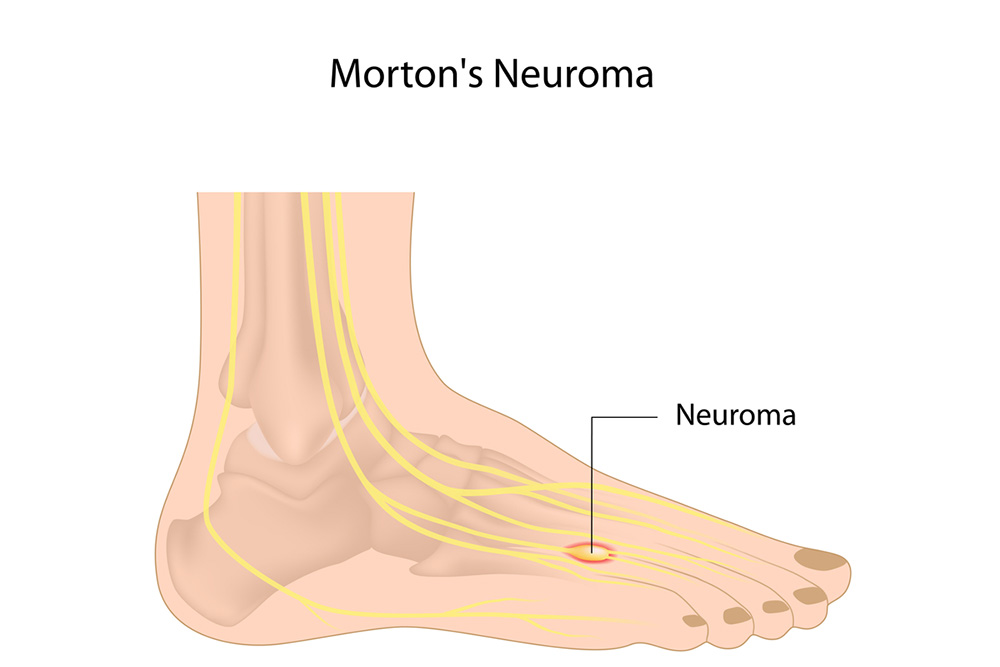 A neuroma of the foot is a painful condition, also known as a pinched nerve or nerve tumor. It is characterized by pain in the ball of the foot, burning or tingling, and some cramping. The neuroma usually develops between the 3rd and 4th toes, causing difficulty walking for long periods. The cause of neuromas is unclear, but certain factors can be connected to their development. Biomechanical difficulties, such as flat feet and high arches, bring on instability to the toe joints that may lead to a neuroma. Direct trauma to the foot can damage the nerve and cause inflammation and swelling. Wearing high-heeled shoes that squeeze the toes can lead to increased pressure on the nerves near the ball of the foot. Finally, repeated stress on the bottom of the feet can create or aggravate a neuroma. If you are experiencing pain in the toes, tingling and numbness in the ball of the foot, swelling, and pain in the ball of the foot when bearing weight, it may indicate a neuroma. Please consult a podiatrist as soon as possible for a diagnosis and treatment options.
A neuroma of the foot is a painful condition, also known as a pinched nerve or nerve tumor. It is characterized by pain in the ball of the foot, burning or tingling, and some cramping. The neuroma usually develops between the 3rd and 4th toes, causing difficulty walking for long periods. The cause of neuromas is unclear, but certain factors can be connected to their development. Biomechanical difficulties, such as flat feet and high arches, bring on instability to the toe joints that may lead to a neuroma. Direct trauma to the foot can damage the nerve and cause inflammation and swelling. Wearing high-heeled shoes that squeeze the toes can lead to increased pressure on the nerves near the ball of the foot. Finally, repeated stress on the bottom of the feet can create or aggravate a neuroma. If you are experiencing pain in the toes, tingling and numbness in the ball of the foot, swelling, and pain in the ball of the foot when bearing weight, it may indicate a neuroma. Please consult a podiatrist as soon as possible for a diagnosis and treatment options.
Foot Pain
Foot pain can be extremely painful and debilitating. If you have foot pain, consult with Brent Harwood, DPM from Southeast Podiatry. Our doctor will assess your condition and provide you with quality treatment.
Causes
Foot pain is a very broad condition that could be caused by one or more ailments. The most common include:
Diagnosis
To figure out the cause of foot pain, podiatrists utilize several different methods. This can range from simple visual inspections and sensation tests to X-rays and MRI scans. Prior medical history, family medical history, and any recent physical traumatic events will all be taken into consideration for a proper diagnosis.
Treatment
Treatment depends upon the cause of the foot pain. Whether it is resting, staying off the foot, or having surgery; podiatrists have a number of treatment options available for foot pain.
If you have any questions please feel free to contact our offices located in Fairhope, Brewton, and Atmore, AL. We offer the newest diagnostic and treatment technologies for all your podiatric needs.
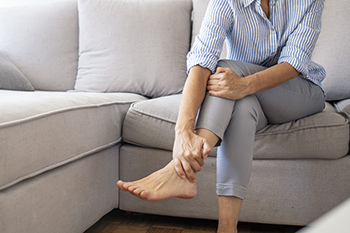 Arthritis is a medical condition that affects a wide variety of individuals across the country. Arthritis primarily impacts the joints of the body, causing them to become inflamed. Individuals who suffer from arthritis can also experience arthritis in their feet. One particular kind of arthritis in the feet is known as midfoot arthritis. This condition occurs at the top, and middle part of the foot when the cartilage between bones diminishes. As a result, the bones can rub up against each other which can ultimately cause inflammation. Certain risk factors are generally associated with midfoot arthritis. For example, suffering from some kind of other foot injury or trauma might make you more susceptible to developing midfoot arthritis. Additionally, one’s natural foot shape might also make one predisposed to developing midfoot arthritis. Schedule an appointment with a podiatrist today for more information.
Arthritis is a medical condition that affects a wide variety of individuals across the country. Arthritis primarily impacts the joints of the body, causing them to become inflamed. Individuals who suffer from arthritis can also experience arthritis in their feet. One particular kind of arthritis in the feet is known as midfoot arthritis. This condition occurs at the top, and middle part of the foot when the cartilage between bones diminishes. As a result, the bones can rub up against each other which can ultimately cause inflammation. Certain risk factors are generally associated with midfoot arthritis. For example, suffering from some kind of other foot injury or trauma might make you more susceptible to developing midfoot arthritis. Additionally, one’s natural foot shape might also make one predisposed to developing midfoot arthritis. Schedule an appointment with a podiatrist today for more information.
Arthritis can be a difficult condition to live with. If you are seeking treatment, contact Brent Harwood, DPM from Southeast Podiatry. Our doctor can provide the care you need to keep you pain-free and on your feet.
Arthritic Foot Care
Arthritis is a term that is commonly used to describe joint pain. The condition itself can occur to anyone of any age, race, or gender, and there are over 100 types of it. Nevertheless, arthritis is more commonly found in women compared to men, and it is also more prevalent in those who are overweight. The causes of arthritis vary depending on which type of arthritis you have. Osteoarthritis, for example, is often caused by injury, while rheumatoid arthritis is caused by a misdirected immune system.
Symptoms
Arthritic symptoms range in severity, and they may come and go. Some symptoms stay the same for several years but could potentially get worse with time. Severe cases of arthritis can prevent its sufferers from performing daily activities and make walking difficult.
Risk Factors
If you suspect your arthritis is affecting your feet, it is crucial that you see a podiatrist immediately. Your podiatrist will be able to address your specific case and help you decide which treatment method is best for you.
If you have any questions please feel free to contact our offices located in Fairhope, Brewton, and Atmore, AL. We offer the newest diagnostic and treatment technologies for all your podiatric needs.